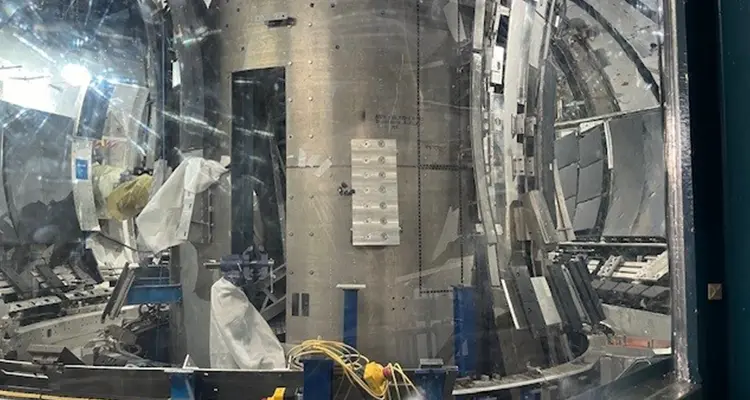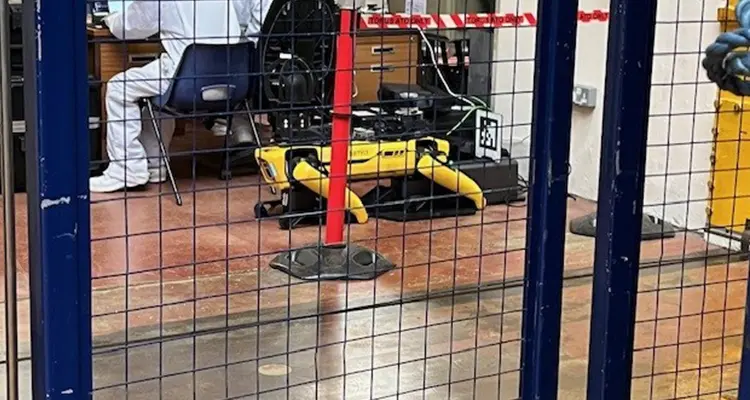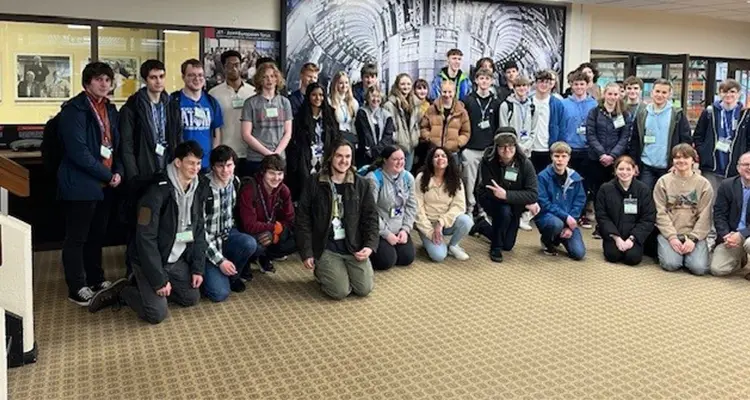Last week, some of our lucky Physics students took a trip to a fusion reactor at Culham Centre for Fusion Energy (CCFE).
CCFE uses nuclear fusion, the same process that powers the sun, which involves superheating a combination of hydrogen gases (deuterium and tritium) at temperatures exceeding 100 million degrees Celsius. The gas then becomes a plasma, with the nuclei combining to form a helium nucleus and a neutron, with a tiny amount of the mass converting into fusion energy. This reaction creates a huge amount of energy from very small amounts of fuel.
A huge doughnut-shaped reactor (pictured below) facilitates this process, using strong magnetic fields to control the plasma, which is a million times less dense than the air around us. It is so hot within the Joint European Torus (JET) fusion reactor, that is the hottest place in the entire solar system!

The JET reactor at the CCFE is now being decommissioned, with plans afoot to replace it with a larger nuclear fusion reactor, ITER, which is being built in France.
Also at the centre, students were shown the Robotics division, which creates robots designed to work in extremely challenging environments, such as the Chernobyl nuclear reactor site. These robots are supremely advanced, with the ability to open doors and withstand the elements. They are designed with the goal of one day bringing fusion energy to the grid. These robots also scamper around the site, with our students playing a game of ‘spot the dog’ during their trip!

This was a great trip and opportunity for our students, with many remarking on the career opportunities and options for students as they progress from college, with Grace Willetts saying:
“It was good to hear about the degree apprenticeships and to know that there is another route to gaining a degree other than the traditional route, and I will be pursuing a degree apprenticeship.”
Zach Birch added:
“The trip was great...it's even made me reconsider my career pathway, maybe at the UK Atomic Energy Authority?”
